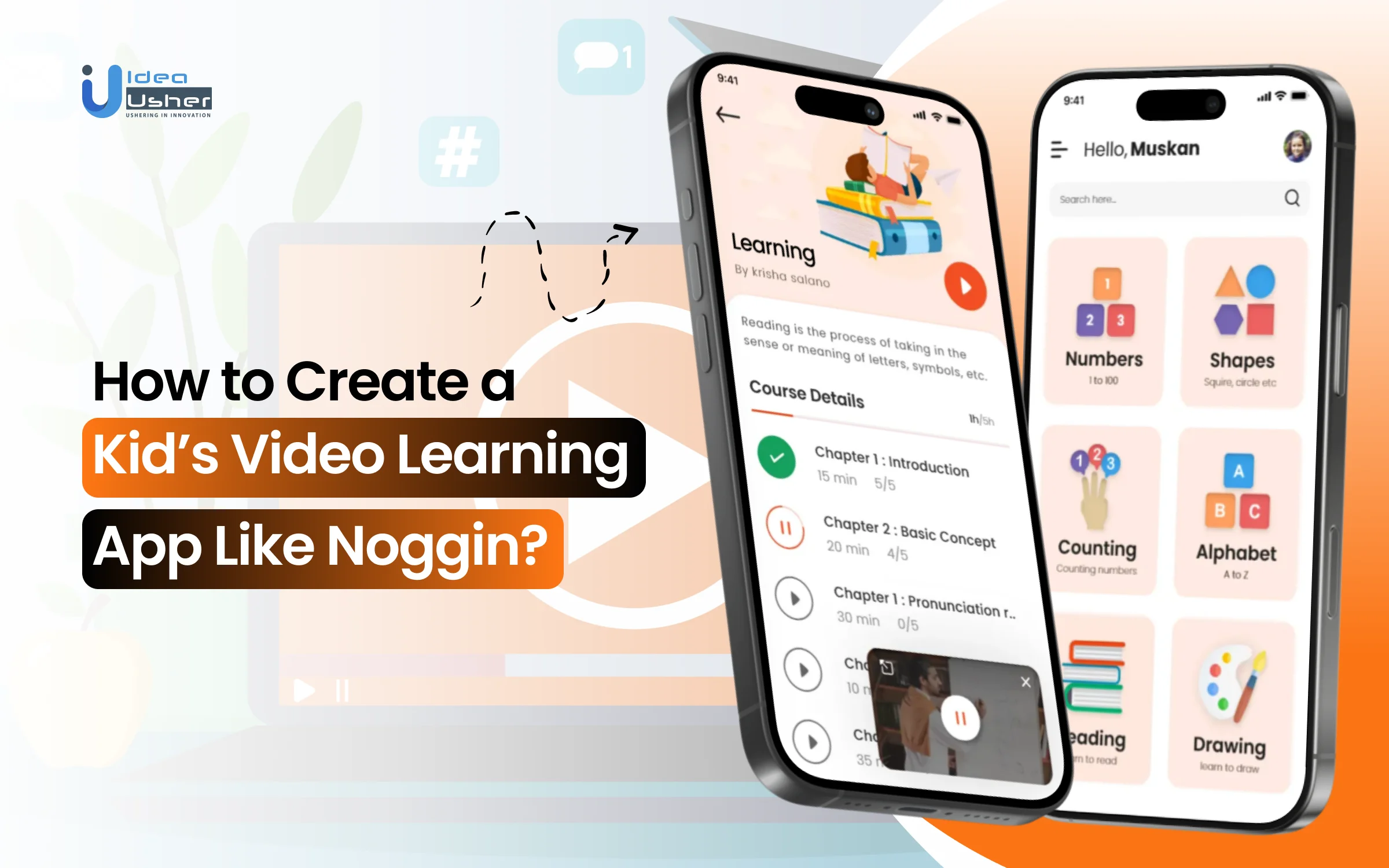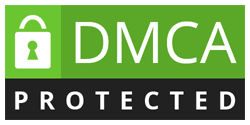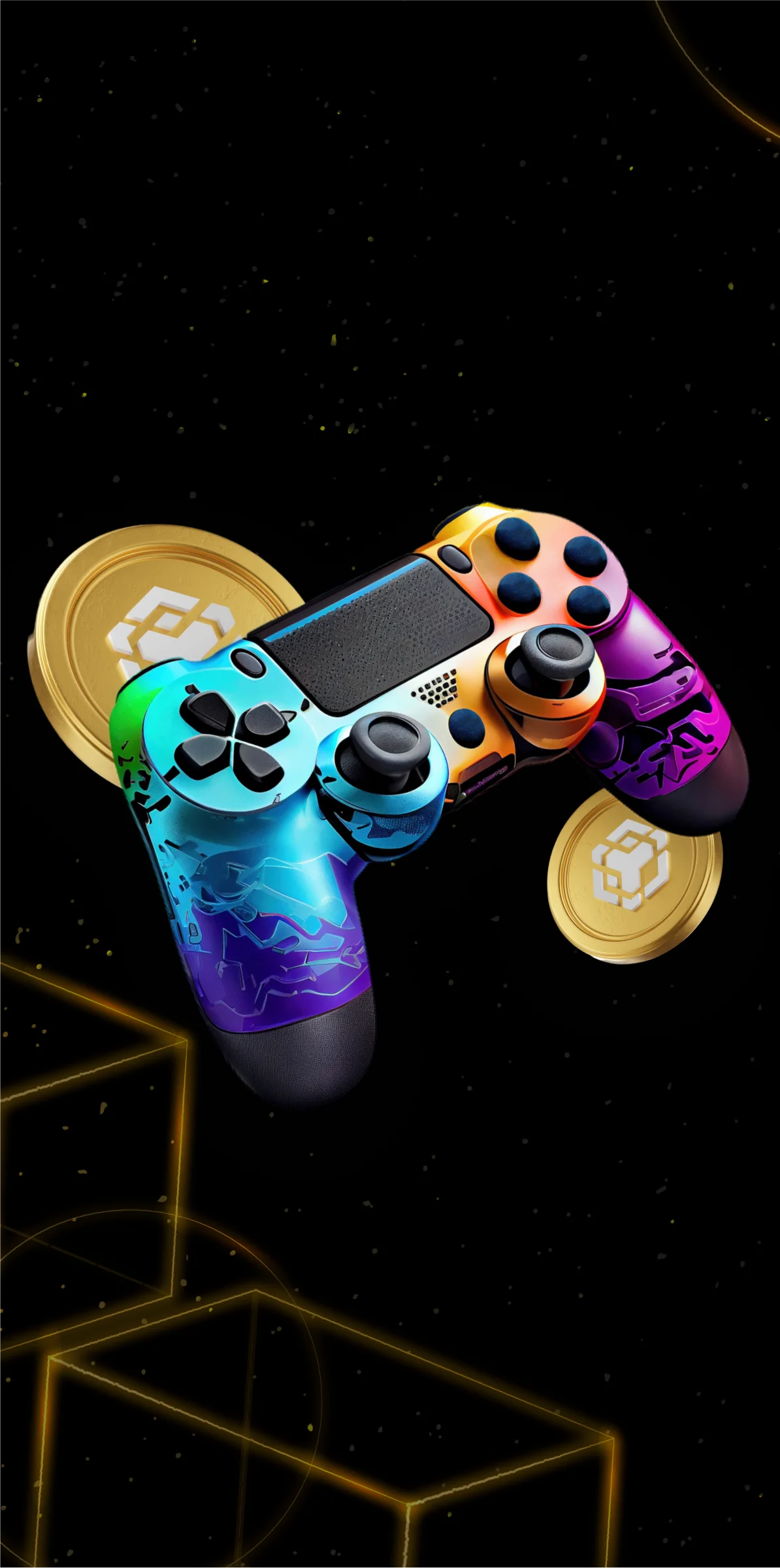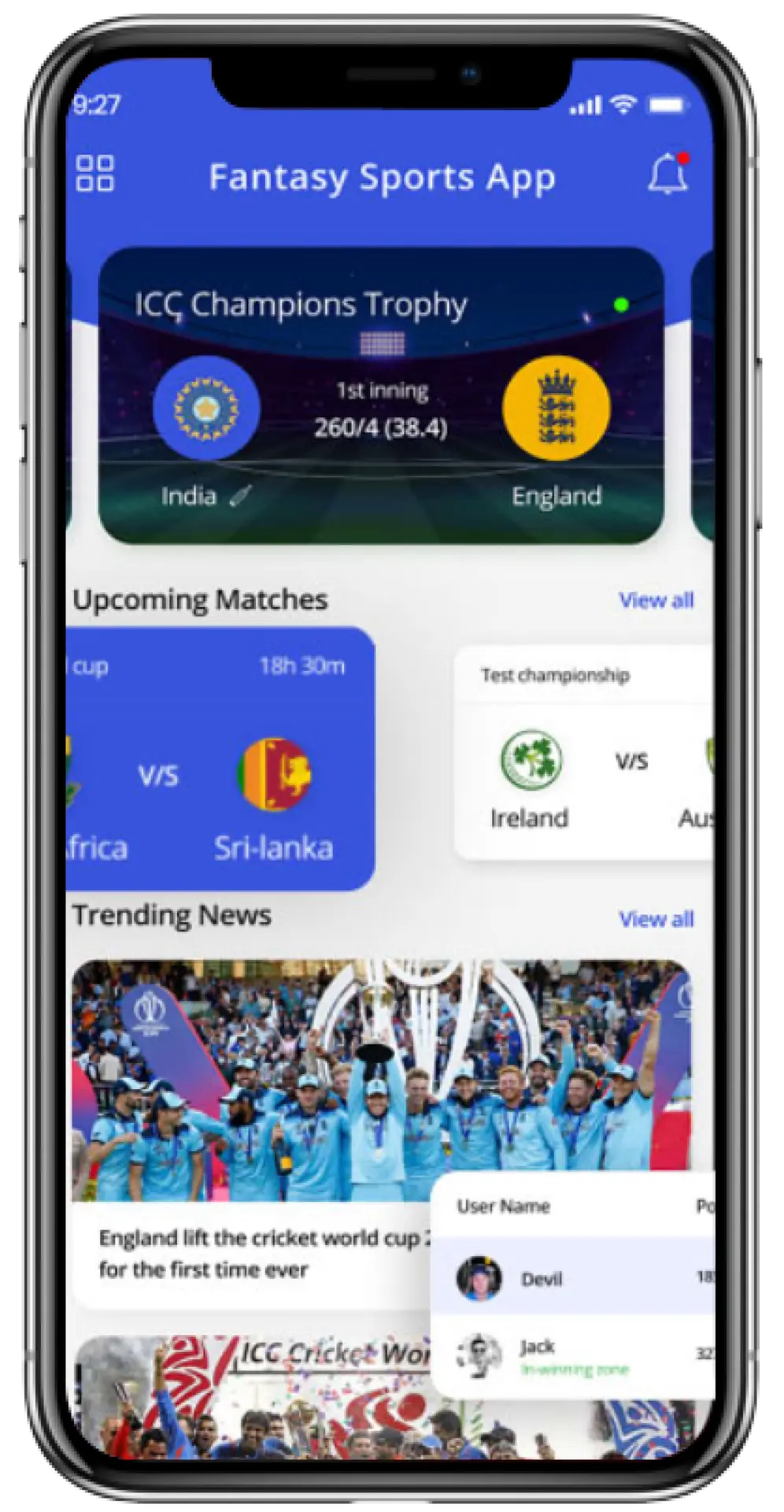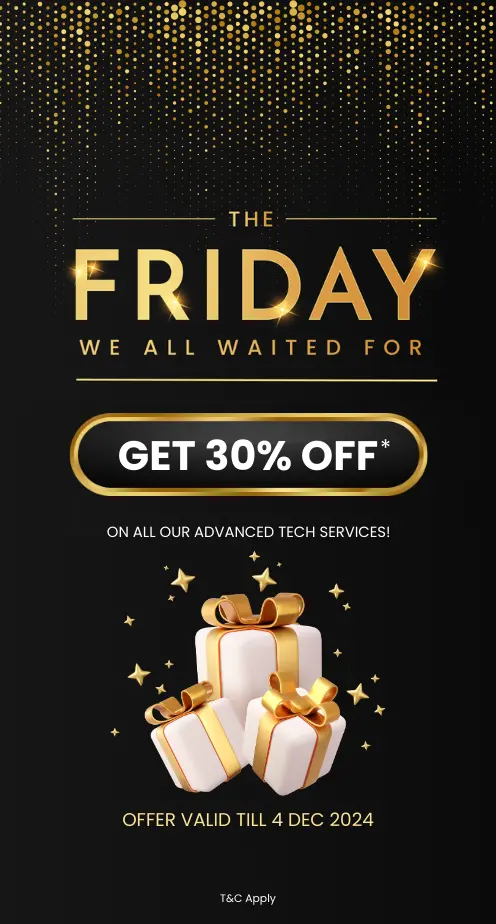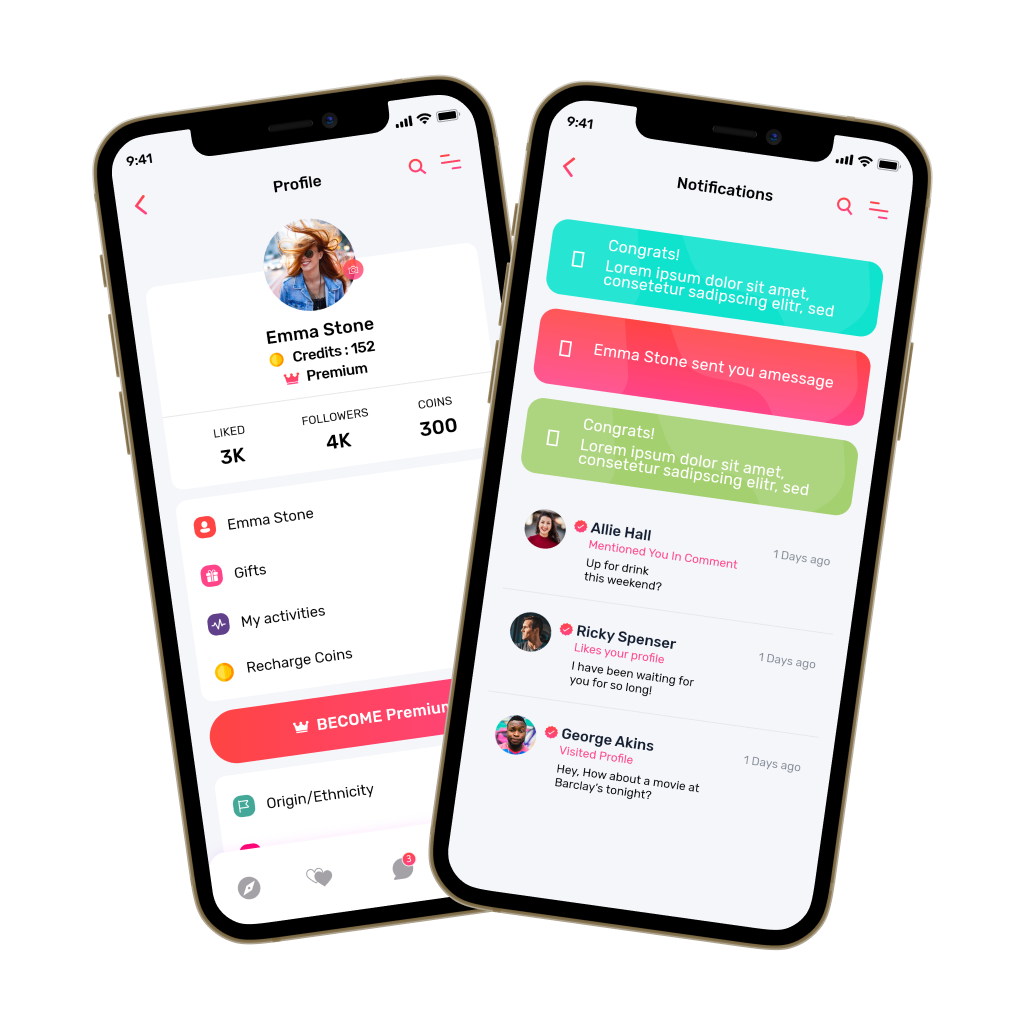There is a clear shift in how children learn today. Digital spaces now work as real extensions of the classroom, and kids adapt to them with surprising ease. Parents notice this shift because traditional videos rarely keep a child engaged for long. Modern video learning apps like Noggin now rely on guided stories and adaptive video paths that change based on how a child interacts.
Many platforms also include simple progress tracking, so young learners can move through a structured, meaningful journey. This evolution feels natural because the tech behind these systems can seamlessly blend engaging content with real skill-building, making it feel effortless for the child.
Over the years, we’ve developed several video learning solutions powered by AI-based recommendation systems and curriculum mapping engines. So, we’re writing this blog to share our expertise on how to create a kid’s video learning app like Noggin. Let’s start!
Key Market Takeaways for Kid’s Video Learning Apps
According to StratsResearch, the kid’s video learning app market is expanding quickly as part of the larger education apps industry, which is expected to grow from USD 6.01 billion in 2024 to USD 7.27 billion in 2025 and reach USD 33.51 billion by 2033 at a 21.04 percent CAGR. This growth reflects parents’ increasing interest in visual, flexible learning options that help children build early skills in a way that feels natural and enjoyable.
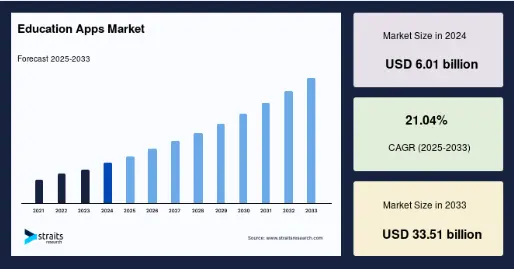
Source: StratsResearch
Khan Academy Kids and Lingokids illustrate how video-led learning can make a real difference for young children. Khan Academy Kids provides more than 5,000 activities for ages 2 to 8, using friendly characters and simple storytelling to support math, reading, writing, and emotional development.
Lingokids, used by over 40 million families, blends short videos, songs, and games to strengthen vocabulary and communication, and its growing YouTube presence underscores the importance of video in early education.
Partnerships are also shaping how these platforms grow. Creative Galileo’s work with Big Animation, Amar Chitra Katha, Periwinkle, and Shermaroo has widened its library with stories and lessons rooted in diverse cultural traditions. These collaborations help apps offer more meaningful content to families while giving young learners a richer, more relatable experience.

What is the Noggin App?
Noggin is a preschool learning app created for children ages 2 and up. It features educational games, videos, interactive episodes, and eBooks led by well-known Nick Jr. characters such as PAW Patrol, Peppa Pig, and Blue’s Clues & You! The app focuses on early learning skills, including math, literacy, science, music, and social skills. Everything is presented in a safe, ad-free environment designed for young children to explore and learn at their own pace.
Here are some of its standout features,
- Interactive Learning Games: Noggin includes hands-on games where kids can tap, swipe, solve puzzles, and interact directly with their favorite characters. These activities are built to support early math, reading, and problem-solving skills while keeping gameplay fun and engaging.
- Downloadable Content: Many episodes, games, and eBooks can be downloaded for offline use, making it easy for kids to learn and play while traveling or in places without an internet connection.
- Interactive eBooks: The app offers a library of kid-friendly eBooks that include read-along narration and simple interactive elements. Children can follow the story independently, and each book includes parent tips to help build comprehension and start conversations.
- Coloring Books: Noggin provides digital coloring pages that let children express creativity and practice fine-motor skills in a calm, imaginative space.
- Parent Tips and Guidance: Throughout the app, parents will find short suggestions and conversation prompts that help reinforce what their child is learning and support more meaningful screen time.
- Multiple Device Access: A single subscription can be used across multiple devices, making it easier for families with more than one child or shared devices.
- New Content Weekly: Noggin updates its library each week with fresh games, episodes, and learning activities, ensuring kids always have something new to explore.
- Safe and Simple Navigation: All content is designed for young children to use independently. The interface is straightforward, kid-friendly, and completely free of ads or inappropriate material.
How Does the Noggin App Work?
The Noggin app works by guiding kids into a protected interface where they can explore content designed for simple touch controls and clear navigation. It runs on a content engine that delivers interactive videos, games, and eBooks backed by early learning frameworks and supported by secure offline storage that parents may rely on during travel.
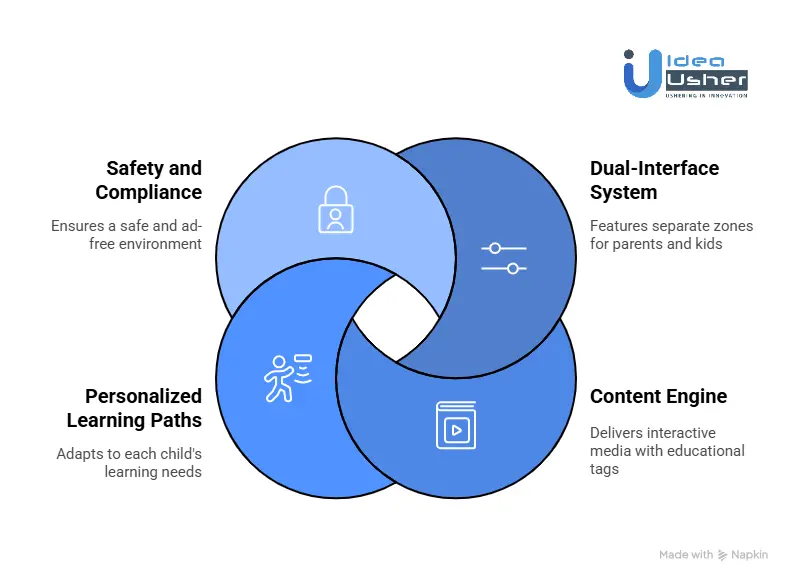
1. A Dual-Interface System
Noggin is designed with two distinct sections that serve different users.
The Parent Zone:
Parents begin by downloading the app, setting up a subscription, and creating child profiles. This area is protected by a Parental Gate, which may involve a simple math problem or a swipe pattern, so young children cannot access settings or make purchases. All account and device controls are kept here.
The Kid Zone:
Once a child enters the app, they are taken into a full-screen environment built entirely for young users. Navigation is based on large icons, simple gestures, and voice prompts. The design creates a safe, self-contained space where every tap leads to an appropriate and intentional activity.
2. The Content Engine
Noggin delivers a mix of interactive media supported by a backend that organizes content with educational tags.
Interactive Videos and Games:
Traditional shows are turned into play-along activities. Children tap, swipe, or speak at specific moments to help characters solve problems. These interactions are linked to the video timeline using a custom player, which transforms passive watching into active learning.
Curriculum-Guided Content:
Every game, book, song, and interactive episode is created with guidance from early-learning specialists. Each piece targets specific skills in literacy, math, science, social development, or creativity.
Offline Capability:
Parents can download episodes, games, and eBooks. This requires secure storage, offline access controls, and Digital Rights Management to protect licensed content.
3. Personalized Learning Paths
Noggin adapts to each child through an internal recommendation system similar to an Adaptive Learning Engine.
How It Works:
The app tracks general interaction patterns such as preferred topics, activity completion, and areas where the child seems to struggle. This information is kept anonymous and focuses only on usage.
How It Helps: Based on these patterns, the app suggests a set of daily activities. A child who enjoys music might see more songs and rhythm games. A child who needs practice with counting might receive more early-math activities. This creates a guided, personalized experience.
4. Safety and Compliance
Much of Noggin’s strength comes from what it avoids as a platform for young children.
Ad-Free Design: Noggin operates without advertisements because it is subscription-based. This keeps the experience clean and prevents exposure to third-party ad networks.
COPPA Compliance:
Since the app serves children under 13, it follows the Children’s Online Privacy Protection Act. This includes rules such as:
- No collection of personally identifiable information
- Only anonymous and aggregated usage data
- No third-party tracking or advertising software
Safety is built into the platform at every level.
What is the Business Model of the Noggin App?
Noggin is Nickelodeon’s subscription-based mobile streaming app designed specifically for preschoolers. It focuses on delivering safe, educational, and ad-free content that young children can watch and interact with since it is owned and operated by Nickelodeon under Paramount (formerly ViacomCBS), the app functions as part of a larger digital strategy rather than as a standalone startup.
Subscription-Driven Service
Noggin runs on a straightforward subscription model. Parents pay a monthly fee to access a curated library of preschool-friendly content. The standard price has been $5.99 per month, giving subscribers full access to:
- Ad-free educational videos
- Classic and modern Nickelodeon preschool shows
- Interactive learning games and activities
- Content featuring well-known characters like Dora, Blue’s Clues, and PAW Patrol
The app is available without a cable or satellite package, making it easy for families who prefer streaming-only media.
Positioning in the Market
Noggin is marketed as a safe and enriching screen-time option. It complements traditional Nickelodeon TV channels but does not require a TV subscription. The target audience is parents seeking structured, age-appropriate learning content for children ages 2 to 7.
Financial Performance and Key Stats
- Since launching in 2015, the app has built a steady subscriber base within the preschool streaming market.
- In early 2024, weekly revenue peaked at approximately $196,000.
- Weekly downloads fluctuated significantly, hitting around 25,000 in January 2024 before dropping to about 8,000 in March 2024.
- Active users also declined during that period, falling from about 181,000 to 137,000, a likely reflection of increased competition from platforms such as Disney+, YouTube Kids, and Netflix Kids profiles.
- Paramount (Nickelodeon’s parent company) continues to fund improvements and content expansion as part of its digital strategy.
Funding and Investment Structure
Unlike independent EdTech or streaming startups, Noggin does not raise venture capital. Instead:
Corporate-Funded Development
- Noggin is fully owned by Nickelodeon, which is part of Paramount Global.
- All investment comes from Paramount’s internal budget for streaming and digital content initiatives.
- Funding supports new content production, technology upgrades, and app expansion rather than fueling venture-backed growth.
Strategic Role
Noggin plays a key part in Paramount’s efforts to strengthen its preschool-focused digital offerings and maintain relevance in the competitive kid’s streaming market.
Other Business Models for Kid’s Video Learning App
Subscription plans, such as those used by Noggin and ABCmouse, are proven engines for recurring revenue. However, they are not the only viable path. For early-stage companies, niche creators, and apps trying to gain traction in crowded markets, alternative models can sometimes reduce acquisition costs, broaden reach, and create faster momentum.
Here are some solid business models for kid’s video learning apps,
1. Freemium Model
Parents can download and use the app at no cost, gaining access to a small but meaningful slice of content. Premium features such as the full library, offline downloads, learning tracks, and ad-free playback sit behind an upgrade.
Example: Lingokids
Lingokids offers limited weekly activities for free. Its subscription unlocks unlimited games, songs, and videos.
Financial Estimate:
Assumptions:
- Installs: 1,000,000
- Free-to-Premium Conversion: 5 percent
- ARPPU: 60 dollars per year
Calculation:
- Paying Users: 1,000,000 × 5 percent = 50,000
- Annual Revenue: 50,000 × 60 dollars = 3,000,000 dollars.
2. One-Time Purchase (Paid App)
Parents who prefer predictable spending often appreciate a single, upfront payment. This model suits focused apps that provide a complete experience without the need for continuous content expansion.
Example: Endless Alphabet
This vocabulary-focused app is sold for a fixed price and provides a polished, ad-free experience.
Financial Estimate:
Assumptions:
- Net Price After Store Fees: 6.99 dollars
- Total Paid Downloads: 250,000
Calculation:
- Gross Revenue: 250,000 × 6.99 dollars ≈ 1.75 million dollars
3. Advertising-Based Model
The entire app is free. Revenue comes from serving ads through certified child-safe networks. With no financial barrier, the potential audience expands significantly. Even families who would never pay for a subscription can still generate revenue.
Example: YouTube Kids
This platform is free for families and monetized entirely through child-safe advertising.
Financial Estimate:
Assumptions:
- Monthly Active Users: 2,000,000
- Impressions per User per Month: 20
- CPM for Child-Safe Ads: 5 dollars
Calculation:
- Monthly Impressions: 2,000,000 × 20 = 40,000,000
- Monthly Revenue: (40,000,000 ÷ 1,000) × 5 dollars = 200,000 dollars

How to Create a Kid’s Video Learning App Like Noggin?
Creating a kid’s video learning app like Noggin will start with a structured content system that syncs interactive layers to precise video cues. An adaptive engine will then adjust difficulty in real time as the platform steadily tracks engagement for strong skill signals. Our team has designed and launched multiple kid’s educational video apps inspired by Noggin, and this is the framework we follow.
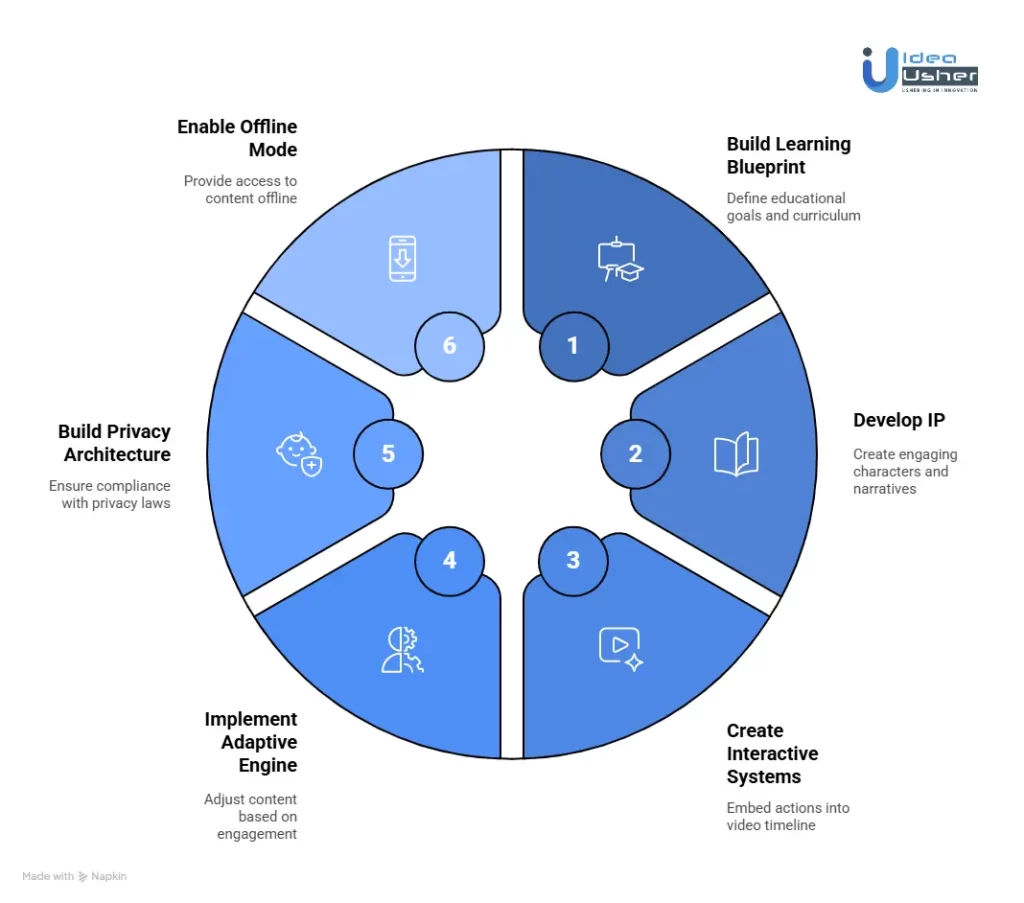
1. Build the Learning Blueprint
We begin by bringing early childhood educators into the process so the learning goals are set before any engineering starts, then we define the curriculum pillars that guide every feature and map all content to outcomes and milestones to ensure the experience supports real developmental progress.
2. Develop Original or Licensed IP
Next, we craft or license character IP that can earn a child’s emotional trust, shaping behavior patterns, sound identity, and narrative structure. Then we A/B test these characters with kids to confirm that the world feels safe, engaging, and aligned with early learning psychology.
3. Create Interactive Video Systems
For interaction, we built a proprietary video authoring system that lets us embed actions directly into the video timeline, syncing taps, drags, choices, and voice prompts with precision while logging interaction events to understand how each child engages with the material.
4. Implement Adaptive Learning Engine
We then integrate an adaptive engine powered by models like BKT or Reinforcement Learning, allowing the app to adjust content based on observed engagement patterns and track mastery through behavior signals rather than personal data collection.
5. Build Privacy-First Architecture
Because these products serve young children, we design the system from day one around COPPA, GDPR-K, and FERPA compliance, using restricted analytics, zero third-party tracking, and a secure parental gate with protected subscription controls.
6. Enable Offline Mode With DRM
Finally, we add a reliable offline mode with encrypted downloads, license validation that works even when the device is offline, and intelligent storage rules that auto-manage files so families always have fresh content without worrying about space.
Video Learning Apps Targeting 68% Daily Screen-Using Kids
Video learning apps can capitalize on the fact that 68% of children under age 3 use screen media daily, by delivering micro-learning video modules, adaptive lesson sequencing, and toddler-proof UI flows. Parents adopt faster when the product is positioned as a structured early-learning tool with transparent skill objectives and usage insights.
1. Reframe the Narrative
Your true customer isn’t the toddler tapping the screen; it’s the parent deciding what their child taps. Many parents feel conflicted about screen time, so your app should resolve that conflict.
Your Positioning Strategy
Present your app as an intentional learning tool, not digital noise. Make it clear that the time spent inside your app is meaningful, educational, and backed by expertise.
- Parent Dashboards: Simple, encouraging summaries such as: “Today your child practiced counting and discovered new shapes.”
- Expert-Backed Curriculum: Highlight collaboration with early childhood educators, pediatric specialists, and child psychologists.
- Transparent Learning Goals: Label each activity with its purpose such as fine motor skills, early math, speech development, or social-emotional learning.
2. Design for a Two-Minute Attention Span
Toddlers don’t browse. They tap, explore, repeat, and abandon anything that slows them down. If your app isn’t instantly intuitive, they will move on.
Your Product Strategy
Deliver a frictionless, toddler-proof interface that feels more like a kiosk than a typical menu. Parents should be able to hand over the device knowing their child won’t get stuck or confused.
- Icon-First Navigation: Big visuals, minimal text, and simple paths.
- Character-Led Guidance: Friendly voices or characters that cue the next step without requiring reading.
- Seamless Transitions: Smooth animations that hide loading time and keep momentum steady.
3. Embrace Micro-Learning and Personalization
Children under three don’t learn in long sessions. They learn in short bursts, small wins, and repeated exposure throughout the day.
Your Learning Strategy
Break content into short 2 to 5-minute units and use data to personalize what comes next. This creates a flow that feels natural to the child and supportive to the parent.
- Short-Form Lessons: Tight, engaging videos and activities designed for quick wins.
- Adaptive Pathways: A recommendation engine that builds individualized learning playlists based on previous interactions.
- Just-Right Difficulty: Automatically adjust complexity so activities remain fun, challenging, and frustration-free.
4. Build a Brand Parents Trust Absolutely
For parents, safety and privacy are not optional. If you get this right, you earn long-term loyalty.
Your Trust Strategy
Lead with safety. Make privacy your clearest differentiator and a central part of your brand.
- No Ads and No In-App Purchases: A clean subscription model builds trust immediately.
- COPPA and GDPR-K Aligned Architecture: Limit data collection, use vetted kid-safe verification services, and communicate your policies in clear language.
- Parental Control Gates: Multi-step, adult-only entry points for settings, account management, and external links.
Common Challenges Create a Kid’s Video Learning App
You may have a powerful vision for a kid’s learning app that blends entertainment with real educational value. The idea is inspiring, but the journey from concept to reality presents specific challenges for children’s platforms.
At Idea Usher, we’ve built multiple kid-focused apps and understand these obstacles deeply. More importantly, we know how to solve them. Here are the most frequent challenges and the strategies that consistently work.

1. Safe Analytics Without Breaking Laws
Kid’s apps must follow strict privacy rules, which makes traditional analytics unusable. You still need data to improve learning outcomes, but collecting personal information can violate COPPA or GDPR-K.
Our Solution:
We use contextual, session-based analytics instead of user-based tracking. This gives insights into engagement and learning trends without storing personal data. Everything runs on COPPA-certified tools and custom backends that stay fully compliant while still supporting adaptive learning.
2. Keeping the Library Fresh and Engaging
The Challenge: Kids get bored quickly. A small content library leads to fast drop-off, and producing new videos and games can become expensive and time-consuming.
Our Solution:
We build an expandable content universe. This includes original characters, reusable templates, and systems that allow new stories and lessons to be created efficiently. For certain skills, we also implement procedural content generation so the app can offer fresh activities automatically. A planned rollout schedule keeps the library growing at a sustainable pace.
3. Designing for Kids, Not Adults
Young children struggle with complex menus, small buttons, and text-heavy interfaces. Even simple friction can cause frustration or accidental exits.
Our Solution:
We design with a “Kiosk Mode” mindset. Interfaces rely on large icons, simple gestures, and clear feedback for every tap. Voice prompts and character guidance help children navigate independently. Parental gates keep them from leaving the app or making purchases by mistake.
4. Balancing Fun With Real Learning
If the app leans too far toward fun, learning is lost. If it feels like school, kids disengage. Balancing both is essential for long-term success.
Our Solution:
We embed learning objectives directly into gameplay. Every interaction is mapped to a skill with help from early childhood education experts. Through a “stealth learning” approach, children complete fun tasks while naturally practicing math, logic, language, or social skills. Reward systems highlight effort and exploration instead of punishing mistakes.

Tools & APIs for a Kid’s Video Learning App Like Noggin
Building a children’s learning platform requires more than uploading videos. Apps like Noggin succeed because they combine strong engineering, thoughtful design, child-safe systems, and educational intelligence. Below is a practical, implementation-ready stack built the same way a real development team would plan it.
1. Application Core
To support multiple device types, your development framework must deliver smooth performance and consistent visuals.
Flutter / React Native / Kotlin Multiplatform
- Flutter offers pixel-perfect UI and reliable performance across devices, making it great for animation-heavy educational content.
- React Native has a strong ecosystem and works well for teams with existing JavaScript experience.
- Kotlin Multiplatform lets you share business logic while keeping fully native UIs, which is helpful when you want platform-specific interactions.
Unity (for gamified video interactions)
Noggin-style “play-along” videos require interactive overlays that standard app frameworks cannot handle.
Unity can layer 2D or 3D animations, touch interactions, and physics on top of video playback. This makes it ideal for quizzes, tap-to-react moments, or mini games that start inside a video.
2. Backend & Infrastructure
A good backend should be fast, secure, and scalable as your audience grows.
Firebase (Configured for COPPA Compliant Restricted Mode)
Firebase provides authentication, cloud functions, real-time data, and offline support. When set to restricted mode, it avoids collecting personal information, helping you stay COPPA compliant while still shipping quickly.
AWS MediaConvert / Eluvio / Brightcove
High quality streaming requires strong video delivery tools.
AWS MediaConvert handles transcoding and adaptive bitrate packaging.
Eluvio offers a decentralized, cost-saving alternative for content distribution.
Brightcove provides an all-in-one video platform with analytics and management tools.
These ensure smooth playback on phones, tablets, and smart TVs.
3. AI and Machine Learning
Personalized learning is what separates a video app from an actual educational tool.
TensorFlow Lite (on-device learning models)
TensorFlow Lite supports voice interaction, activity detection, and offline-focused personalization. Running models on the device keeps sensitive data out of the cloud, which is essential for children’s privacy.
Adaptive Learning Engines (ALE)
A strong ALE uses mastery tracking and Bayesian Knowledge Tracing to match lessons to a child’s progress. Instead of a simple “watch next” list, it dynamically adjusts content based on the skills the child is developing.
4. Trust, Safety, and Compliance
Compliance is not optional with children’s apps. It must be built in from day one.
Verification and Compliance Providers
PRIVO, kidSAFE, and SuperAwesome help you implement verifiable parental consent, age-appropriate authentication, and compliance with COPPA or GDPR. These tools reduce legal risk and build trust with parents.
DRM and Content Security
Your videos must be protected both during streaming and when downloaded. Widevine and FairPlay secure streams on Android and iOS. Additional offline encryption prevents downloaded videos from being accessed outside your app. A proper DRM setup protects your content and your users.
Conclusion
Building a kid’s video learning app like Noggin is not only a coding exercise, it is a full technical journey that blends curriculum design, safe compliance architecture, IP protection, adaptive learning intelligence, and DRM-ready multimedia systems. You might find that each layer must work together in a precise way, and it should guide young learners without friction.
With the right mix of engineering, educational logic, and secure distribution, a business could enter a fast-growing market and build a brand that children will actually trust. Idea Usher can then step in as a partner to design, build, scale, and certify the entire platform, so you can focus on long-term growth.
Looking to Develop a Kid’s Video Learning App Like Noggin?
Idea Usher can help you build a kid’s video learning app like Noggin by designing a secure architecture that handles adaptive learning and protected data flows. Leveraging over 500,000 hours of coding expertise, our team of ex-MAANG FAANG developers will engineer a platform that could run smoothly with interactive video features and safe offline access.
We work closely with you so the product will feel reliable and engaging while still meeting strict technical standards.
- Architected for Learning: We build the backend for personalized, curriculum-driven journeys.
- Engineered for Trust: We implement robust parental gates and data-safe analytics.
- Designed for Fun: We create sticky, interactive experiences with original characters.
We handle the complex tech so that you can focus on the big picture.
Check out our portfolio and transform your idea into a secure, scalable success.
Work with Ex-MAANG developers to build next-gen apps schedule your consultation now
FAQs
A1: You could expect a build cycle of roughly six to fourteen months because a project like this usually needs careful planning around feature depth, content pipelines, and IP creation, and each stage must move through design, engineering, and validation in a steady way.
A2: You do not have to create original characters, yet most teams eventually choose to because unique characters usually shape the brand voice, support stronger narrative learning paths, and help young users feel more connected to the platform over time.
A3: Yes, it absolutely can, and many teams prefer this route because subscriptions, licensing deals, merchandise drops, and strategic partnerships often deliver a healthier LTV model and a safer environment that parents will trust.
A4: The most common slip happens when a team rushes into content production before establishing a solid curriculum backbone, and this often forces expensive rewrites later, so it is far wiser to shape the learning structure first and let the content flow from that foundation.
